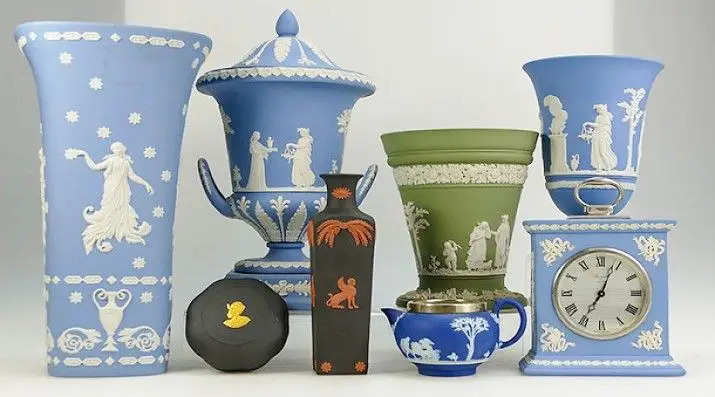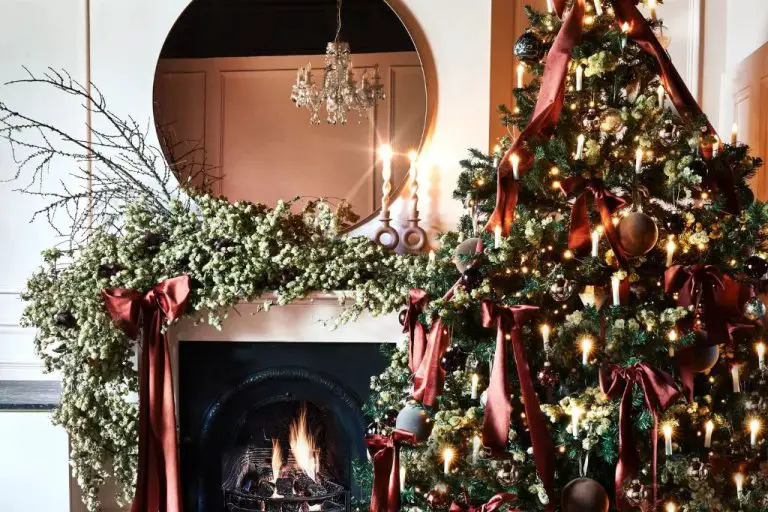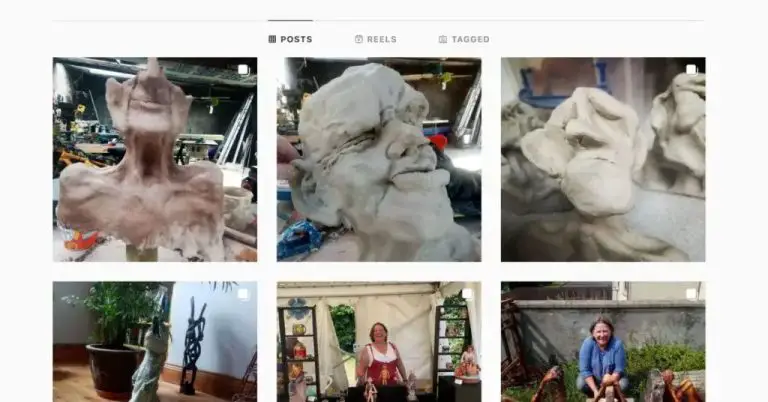How Can You Tell If Wedgwood Is Real?
Wedgwood is a prestigious British pottery brand that has been around since the mid 18th century. Founded by Josiah Wedgwood in 1759, Wedgwood pioneered many innovations in pottery and porcelain manufacturing over the years, and became especially known for their jasperware in light blue coloring with white bas-relief decorations. Today Wedgwood remains a leading global luxury brand producing high-quality ceramics, porcelain, and glassware.[1]
In this article, we’ll provide some tips on how to determine if a piece of pottery is genuine Wedgwood or just an imitation. We’ll look at key aspects like the bottom mark, glaze, color, craftsmanship, patterns, and imperfections. Consulting experts and researching the provenance of a piece can also help authenticate it. The goal is to leave readers with a good understanding of what details to examine when appraising potential Wedgwood pieces.
Examine the Bottom Mark
The markings on the bottom can help identify it as authentic Wedgwood. Real Wedgwood pieces will be marked with impressed marks that identify the company and sometimes the artist or pattern. According to this source, authentic Wedgwood pieces will have marks stamped on the bottom, even if the exact pattern is unknown.
Study the underside of the piece carefully and look for these stamped markings. Wedgwood marks often include the name Wedgwood, initials like BW for Basil Wedgwood, the pattern name, symbols like a Roman numeral date code, and possibly a workman’s mark or artist’s mark. If the bottom has no markings, it’s very unlikely to be authentic antique Wedgwood.
There are guides available online that can help decipher the meanings of the different Wedgwood marks. Researching the marks is an important step in verifying that a piece is genuinely created by Wedgwood master craftsmen.
Look at the Glaze
One of the most distinctive features of authentic Wedgwood pottery is the glaze used. Wedgwood is known for its smooth, matte glaze with a slightly textured finish. The glaze is often described as having a “silky” appearance. Some of the most iconic Wedgwood glaze colors include a blue-green hue known as “Wedgwood Blue,” inspired by Chinese porcelain, as well as matte whites and pale blues (https://www.theceramicshop.com/product/584/1102-wedgwood/).
According to Spectrum Glazes, their 1102 Wedgwood glaze is designed to imitate the look of antique Wedgwood pieces, with a greyish blue-green opaque finish ideal for bringing out bright colors on white stoneware (https://www.spectrumglazes.com/product/1102-wedgwood/). When examining the glaze on an alleged Wedgwood piece, look for this distinctive matte, slightly gathered texture and blue-green or pale blue hue.
Consider the Color
One of the most defining characteristics of authentic Wedgwood pottery is the classic colors used in their designs. Wedgwood is particularly known for their iconic “Wedgwood blue” shade seen on popular jasperware lines. This distinctive blue has a pale, matte finish and is often paired with crisp white contrasting reliefs. Some of the most quintessential Wedgwood blues include Pearl Blue, Lavender Blue, and Seraphim Blue (Source). Beyond blue, Wedgwood is recognized for celadon green, pale yellow, bright coral reds, and matte black basaltware. When examining a potential Wedgwood piece, pay close attention to the colors used. The hues should have a softened, powdery quality free of any metallic flecks. If the colors appear flat, milky, or too vibrant, the piece is likely not authentic Wedgwood.

Evaluate the Craftsmanship
One of the key ways to identify real Wedgwood is to carefully evaluate the craftsmanship and decorative details. Wedgwood is known for its exceptionally high quality construction and decorative techniques that require great skill to execute.
Real Wedgwood pieces will have clean lines, sharp details, and smooth surfaces without bumps or irregularities. The edges should be crisp and well-defined. According to the Wedgwood website, each piece goes through multiple quality checks and polishing stages to ensure perfection. Wedgwood’s skilled artisans hand paint each design with great precision using fine brushes.
Decorative elements like gold or platinum bands and intricate patterns should demonstrate consistency and symmetry. Subtle nuances in shading and painterly effects exhibit the mark of a true artisan. Faux Wedgwood often shows sloppiness in the motifs or blurring of fine details.
Inspect areas like handles and spouts carefully. Wedgwood attaches these seamlessly with near invisible joins. Visible excess glue, gaps, or uneven application of elements indicates a lower quality fake.
Research the Pattern
One of the best ways to date and authenticate Wedgwood pieces is by identifying the pattern. Wedgwood has produced hundreds of patterns since its founding in 1759, with many patterns being introduced and then discontinued over the company’s long history. Consulting references like Replacements.com and books on Wedgwood can help date a pattern based on its style and the years it was in production.
For example, some patterns like Queensware date back to the late 1700s and early 1800s, while patterns like Strawberry Hill and Johnson Brothers are mid-20th century designs. If the pattern style matches the purported age, it’s a good sign the piece is authentic vintage or antique Wedgwood. Checking when a pattern was introduced and discontinued provides bracketed date ranges for dating the piece.
Less common patterns, especially limited editions or artist designed patterns, are also more likely to be genuine. Mass-produced fakes often copy popular or classic patterns. Researching the pattern library thoroughly can help determine if a particular style was produced by Wedgwood.
Look for Imperfections
Real Wedgwood pieces often have slight imperfections due to the handmade manufacturing process. Examining the piece for small cracks, uneven glazing, or irregularities can help determine authenticity.
As noted in the Wedgwood Argenta platter listing on eBay, authentic Wedgwood may have “minor hairline cracks that are visible only under close inspection.” The handcrafted nature of antique Wedgwood leads to minor variations.
An auction listing also references an antique Wedgwood bowl with some imperfections. The presence of small flaws can signify human craftsmanship, rather than mass manufacturing.
While modern Wedgwood strives for perfection, antiques often carry the subtle hallmarks of their handmade origins. Examining an older piece for slight irregularities can help determine if it is authentic.
Consult an Expert
One of the best ways to authenticate antique Wedgwood pieces is to consult a professional appraiser who specializes in Wedgwood. According to Alexis Antiques (https://www.alexisantiques.com/featured/), professional appraisers examine the bottom marks, glaze, color, craftsmanship, and other details to determine if a piece is authentic Wedgwood or a reproduction. They have extensive knowledge and experience that allows them to provide accurate assessments and valuations.
For example, according to a JustAnswer antique appraiser (https://www.justanswer.com/antiques/6m6pp-wedgwood-plate-no-2169-andwillon-back.html), professionals can identify key markers like the impressed marks, glaze formula, and production techniques to authenticate Wedgwood pieces. Their expertise comes from years of specializing in Wedgwood valuations and thoroughly examining thousands of pieces.
Therefore, consulting a Wedgwood specialist is the best way to get an authoritative authentication assessment and appraisal. They have the depth of knowledge needed to accurately judge authenticity and provide valuations for insurance or sale purposes.
Research Provenance
Provenance refers to the history of ownership of an antique or artwork. Researching provenance helps establish authenticity by providing a documented history of who has owned the piece since its creation. According to the Wikipedia article on Provenance, auction records are an important resource for researching provenance as they provide details on previous owners and sales. The more complete the provenance, the easier it is to authenticate a piece. Gaps in provenance can raise doubts. When researching provenance, look for exhibition history, collection marks from previous owners, sales receipts and invoices. A solid provenance proves the piece is genuine and makes it more valuable to collectors.
Conclusion
In summary, there are several ways to tell if a piece of Wedgwood pottery is authentic or not. First, examine the bottom mark and make sure it matches the time period the piece is supposedly from. An older piece will have markings that look more antique. Second, inspect the glaze and color carefully – true Wedgwood often has a glossy finish and vibrant hues. Check the craftsmanship as well, looking for any sloppiness or inconsistencies which may indicate a fake. Additionally, research the pattern – is it a known Wedgwood design? Fake Wedgwood tends to mimic popular patterns. Examine for any imperfections like bumps or flakes which tend to indicate authenticity. If still uncertain, consult an expert antiques dealer or appraiser who can properly authenticate the piece. Checking provenance helps too – does the piece have documentation showing it came from a reputable source? By following these tips, you can determine if your Wedgwood pottery is the real deal.



